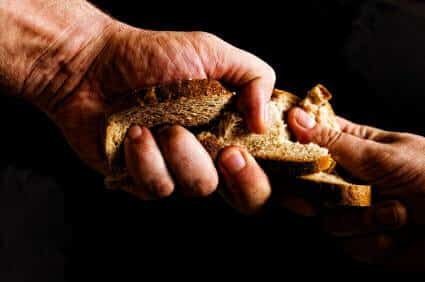 Planting herbs can be good for your medicine cabinet as well as your pantry, and can be easily grown. You should start your herb garden with varieties that you currently enjoy using in your cooking, for your health, and as teas. These would include: basil, thyme, oregano, chamomile, mint, and sage.
Planting herbs can be good for your medicine cabinet as well as your pantry, and can be easily grown. You should start your herb garden with varieties that you currently enjoy using in your cooking, for your health, and as teas. These would include: basil, thyme, oregano, chamomile, mint, and sage.
When you’re laying out your herb garden, (and before planting), you need to take into consideration the type of soil the each herb needs, the amount of sunlight required, plant spacing and also the height each will grow. For example, sweet basil grows well from seed and also transplants easily, likes full sun or light shade exposures, requires 6” to 12” spacing and grows up to 24” tall, likes well drained soil and is an annual plant (it has to be replanted each year). Knowing this, you would want to grow ‘like-minded’ herbs together; such as cilantro.
I have one raised bed where I plant several types of basil, parsley, tarragon, cilantro and also sweet peas that grow up the wall behind them; they love growing together. The wall is on the east side of the bed with some fencing fastened to it for the sweet peas to twine into. I plant the herbs with the taller varieties – basil and tarragon – at the south end so that they don’t shade the shorter ones – parsley and cilantro.
I also grow chamomile and peppermint in large pots, as they can be invasive; they also make great teas for medicinal purposes and flavorful enjoyment. Chamomile is nice for relaxing you on those sleepless nights. Peppermint is good for upset stomachs and as a poultice for painful muscles too.
Some herbs – like cilantro – go to seed quickly, so they need to be replanted often during the growing season. Others – like sage, oregano, catnip and rosemary – are biennial or perennial growers. Biennial means that they will come back the next year, and perennial means they will come back year after year, with proper care.
Sage is used in poultry dishes or as a nice tea mixed with fresh ginger slices and a little honey. It is nice for soothing sore throats. Oregano is good for tomato/Italian dishes. Rosemary is good for use in teas, or in flavoring vinegar, vegetables, jam, butter, stuffing, stews, or meat dishes. Catnip, as its name suggests, is a favorite for cats to nibble on, so plant it in an area that you wouldn’t mind the local felines wandering into. It is good as a tea and is especially helpful for female troubles, both for drinking and for making a warm wet compress to place on the stomach and lower back regions.
When moving your herb garden inside for the winter, start your chosen varieties in pots outside among your outside herbs. If your plants need 6-12 inches between them outside, when you grow them inside they should be planted in a pot no smaller than 6 inches in diameter. Plants requiring larger spacing will require larger pots. They will not grow as tall inside as they do outside, as they will not get as much sunlight as they do in your garden. However, fresh herbs are great all year long. If your home has more sunlight on the eastern side you should place your indoor garden in eastern windows; if you get more sunlight on the western side, then place them in windows on the west side of the house. Give your plants ¼ turn every two or three days so that all sides will get ample sunlight.
Fertilize them with a mild liquid fertilizer at least twice a month, as your potting soil will lose its nutrition more rapidly in a container than it will in your outdoor beds. If you keep rabbits you can use the same ‘tea’ on the indoor garden as on your outdoor garden, just in a weaker solution, say two inches of rabbit pellets in a five gallon bucket instead of the four inches that you would use outdoors. Be sure that you have saucers or some type of dishes under each of your indoor herbs to catch the overflow. When you feed the plants, be sure to pour enough of the ‘tea’ into the plants so that it fills the dish below about half-way full. Let the ‘tea’ remain in the dishes over night, and if there is any remaining in the dishes in the morning, pour it back into your five-gallon bucket to reuse. If you don’t raise rabbits or choose not to use their tea, buy a liquid, organic plant food from your local garden center and follow the label directions very closely as you can burn your plants if used improperly.
You should try to experiment with new herbs and find new flavors that you can add to your favorite recipes. Try making new and exciting teas for flavor or to add to your medicine cabinet.
Grow, Eat, and Enjoy!










